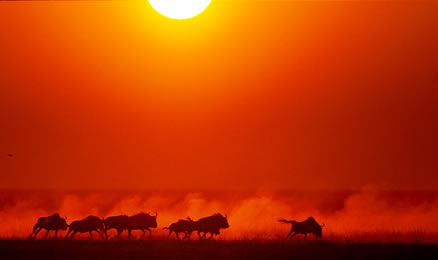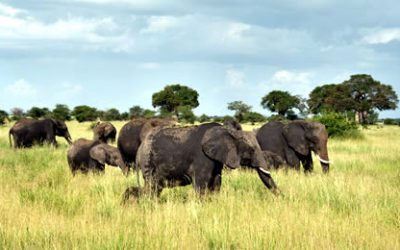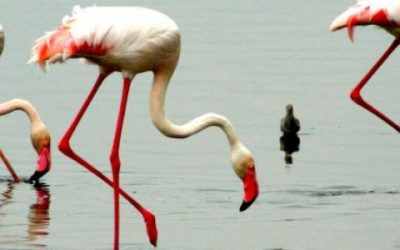The Serengeti National Park lies in Northern Tanzania and covers an area of about 14,760 square kilometres. It was first established in the 1920’s and was made a National Park in 1951. It is renown throughout the world as an area of great wildlife viewing. It is particulary famous for the huge herds of wildebeest and zebra that migrate. Every year following the rains in search of new grass. The word Serengeti comes from the Masai language and means endless plains. The park lies on a high plateau between the Norongoro Highlands to the east and Lake Victoria to the west. To the north lies Kenya and the Masai Mara Game Reserve, which forms the northern part of the Serengeti ecosystem.
WILDLIFE
To many it is regarded as Africas finest game park. Animals and bird life are usually seen in abundance throughout the year. The most famous feature of the park is the spectacular concentration of plains game during the annual migration. It is also well known for its unique wildlife lodges and the beautiful granite outcrops or “kopjes” which rise out of the plains.
VARIETY OF HABITATS
Many different types of habitat exist in the park and this creates homes for a wide variety of species. Generally speaking, you can divide the park into four regions. In the north, it is hilly and wooded, in the southeast are short and long grass plains, in the western corridor are extensive woodlands and black clay plains and in the centre is the acacia woodland and savannah. Each vegetation area attracts different types of animals.
MIGRATIONS
Between July and September they are in the northern section of the park and in the adjoining Masi Mara Game Reserve in Kenya, which is their dry season refuge. Around mid-September they head south past lobo wildlife lodge reaching the short grass plains in the region of the gol mountains and Nabbi Hill around December. Those that have survived the long migration route calve in January and February in this area, before repeating the quest for water and greener pastures in May. The approximate distance covered each year is around 800 kilometres. There are estimated to be more than 1.500,000 wildebeest in the park whilst burchells zebra number between 300.000-400.000.
BIRDS
The Serengeti National Park is home to over 500 different species of birds – secretary birds- marabou- ostriches- kori bustards-guinea fowl- lilac breasted rollers- bateleur eagles-Egyptian geese-herons – various types of vultures. – Sunbirds-starlings-go away birds (grey louries) weaver birds and barbets can be seen.
OTHER ANIMALS
Commonly found in the park, apart from the wildebeest and zebra, are various types of antelope. many herds of thomsons and grants gazelle. Small herds of cape buffalo, topi and waterbuck, as well as Masai giraffe are normally seen. Families of warthog are a common sight. Hyena jackal and lion are regularly sighted, often resting in the shade. Lion sightings can be either solitary males, or large prides of lioness together with their cubs. Lions tend to hunt between dusk and dawn. Cheetah can often be spotted out on the open plains particularly in the morning or late afternoon, when temperatures are not too high. They rely on daylight and speed to catch their prey. Leopards, because of their generally nocturnal hunting habits, are not often spotted but when seen are usually found asleep or lounging in the branches of their favourite tree. Groups (or pods) of hippo are found in the bigger pools and rivers. Crocodiles are sometimes seen sunning themselves on the riverbanks. Vervet monkeys and baboons are the most common type of primate seen around the park. Rock hyraxes (or dassies)- a sort of rock rabbit who’s nearest living relative is the elephant!- are always seen around the lodges. Nocturnal animals which include the bat eared fox and porcupines, are not often sighted, except perhaps first thing in the morning or at dusk.




